Overview
For my game I decided to not appropriate an existing game outright, rather I appropriated concepts from existing things to create something unique. The resulting game is designed to draw attention to the fact that image files on computers are just information, and by combining information from different sources we can create surprising new outcomes and discoveries. This is done by taking image files and embedding them with information about the artist, the subject, the file’s metadata, and more into the file itself. The results can look something like this:
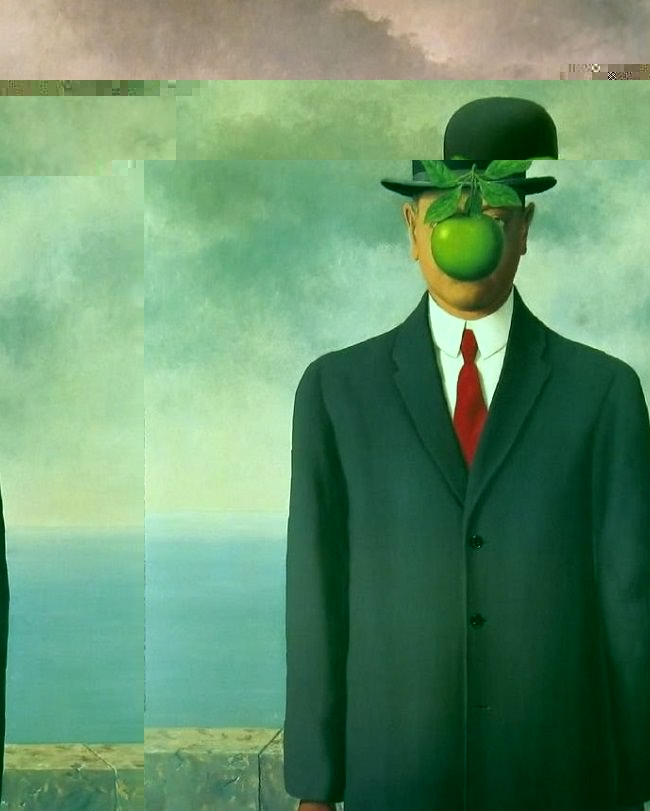
The game appropriates the text editing program TextEdit into a photo editing program by having players open images as text files. The Mac batch processing utility known as Automator was also appropriated into a system that automatically corrupts files based on inputs to make the game easier to operate. The icon I made for this program is a corrupted version of the TextEdit icon. The cards that the game are played with also use appropriation; they have classic bicycle playing card backs, though they have been corrupted as well.
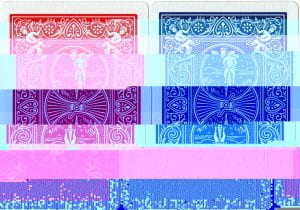
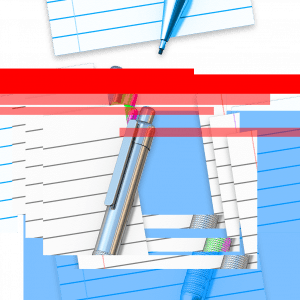
The game also appropriates the MacOS operating system to a certain extent as well. Each player is given their own desktop and have to navigate and manage several different windows to complete their turn. The setup for each desktop was intentionally awkward to navigate, and the computer was also littered with sticky notes with lists of homework I appropriated or made with an equal number of hints and irrelevant information.
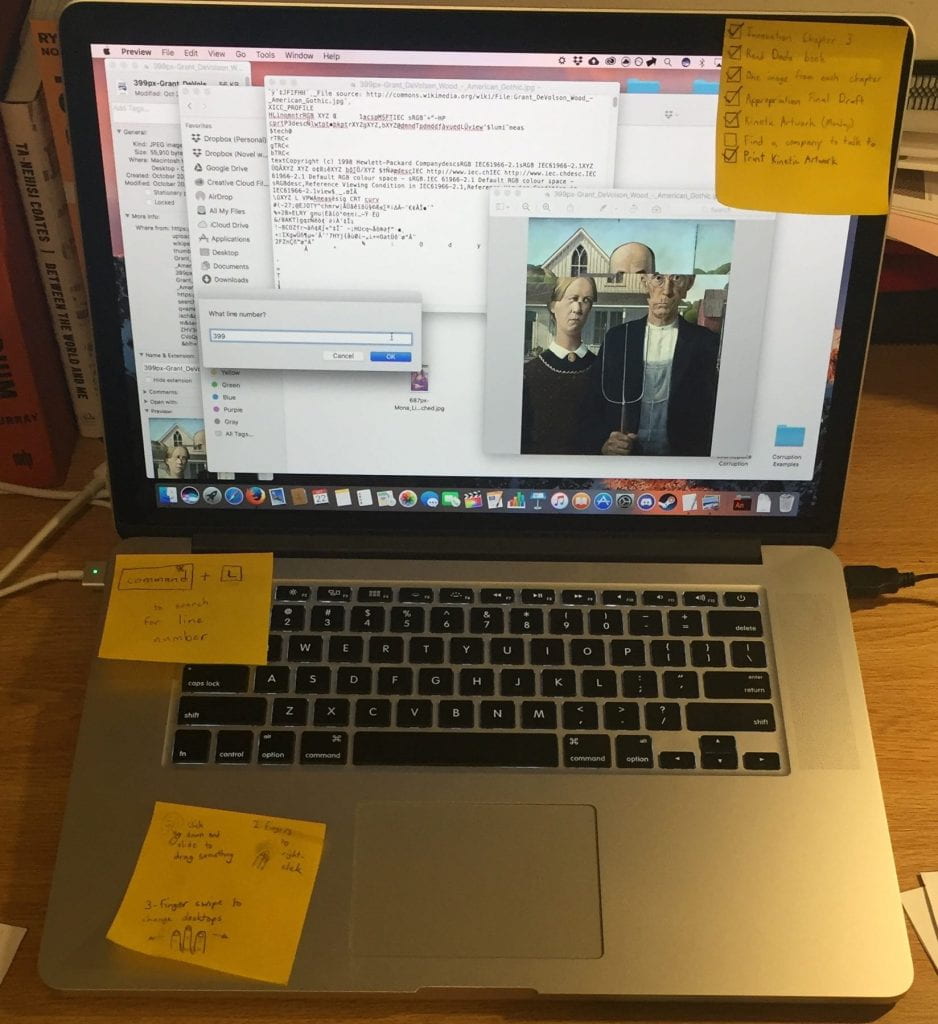
The idea of drawing attention to the media being used was taken from René Magritte’s La trahison des images (The Treachery of Images), some of the gameplay mechanics are taken from the board game Ticket to Ride, and the idea of a hybrid board-and-digital game was taken from Mansions of Madness Second Edition.
Individual players also choose an art piece to appropriate themselves at the start of the game.
The Setup
Each player chooses a well-known work of art that has a Wikipedia article, and downloads a “medium size” image of it using Google Images. Medium-sized images seem to work the best; too small and the image will completely break after one turn, and too large and it won’t corrupt easily.
A internet browser is opened with a tab for each piece with the corresponding Wikipedia articles open. Each player creates a new desktop and opens the Corruption Game folder, then places their image inside. They then right-click (Command-click) their image and choose “Get Information” to bring up the metadata for the file. The red Line cards and blue Data cards are placed in two piles, face down, within reach of all players. Three Data cards are flipped face up and placed in a line, this is the selection pile. When a card is removed from the selection pile, draw another Data card to replace it. After each turn, discard the cards that were used in that turn. The setup should look something like this:
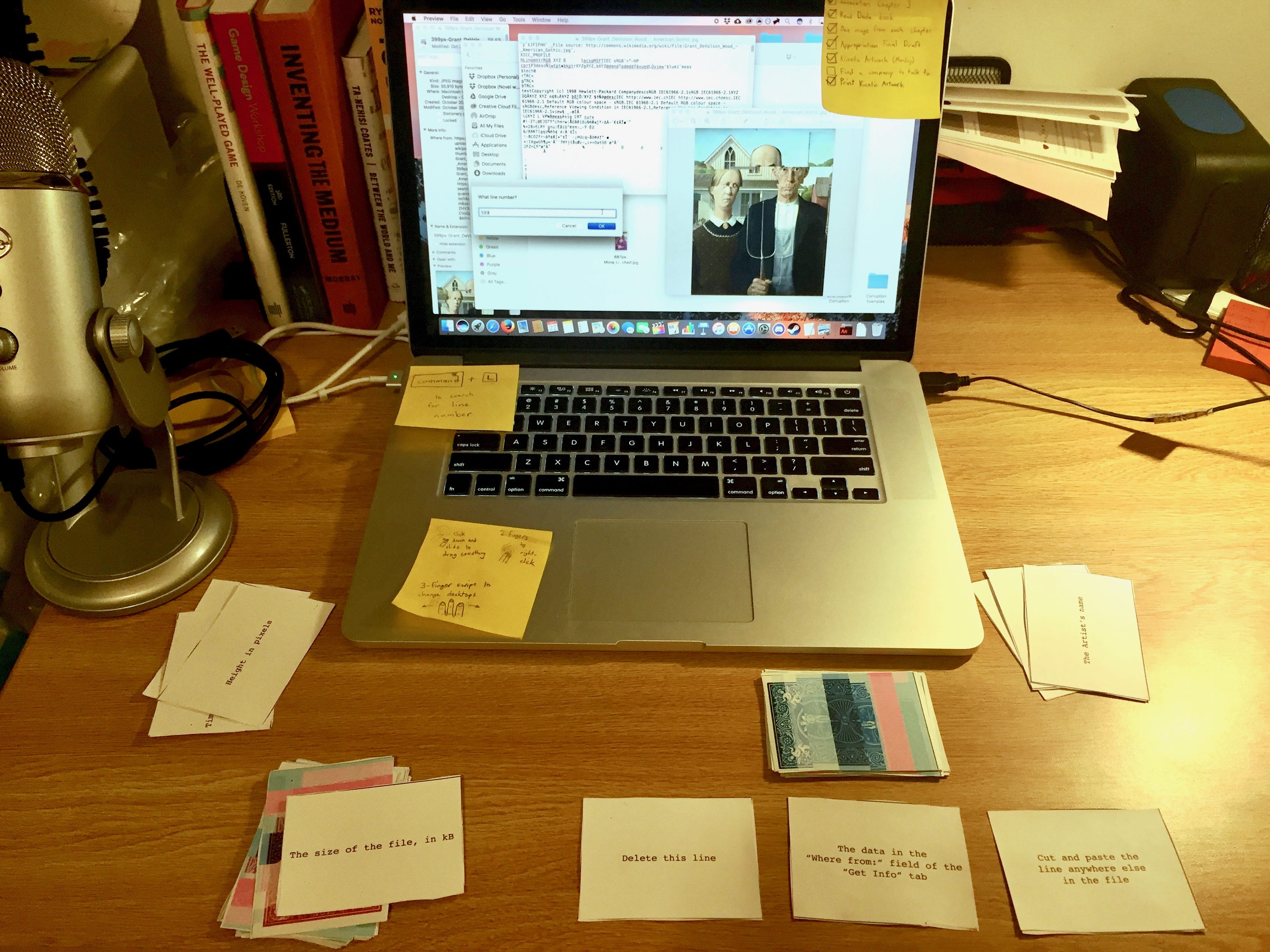
At the start of a player’s turn, they then draw one Line card and choose one Data card from the selection pile. They then drag their image file onto TextEdit or the Line Replacement Corruption file, depending on what the cards require of them. The line card tells the player which line of the image-opened-as-text-file to navigate to, and the Data card tells them what information to replace that line with or what to do with that line. After the operation has been done, players save the file and close TextEdit.
Side note: The Line Replacement Corruption app automates the corruption process, but is very limited. It asks the player for a line number, then asks the player to copy what they want to replace that line with to their clipboard. It then pastes that into the file and automatically saves and closes TextEdit. This makes some turns much shorter and easier, but it cannot handle any of the more complicated Data cards such as deleting a line or cutting and pasting the line somewhere else. With the more advanced Data cards, the player must do them manually in TextEdit.

All of the Line cards will result in a number. If TextEdit or the Line Replacement Corruption app cannot find that line, remove a digit from the far left or right of the number until it works. Here are the possible Line cards, followed by the possible Data cards:
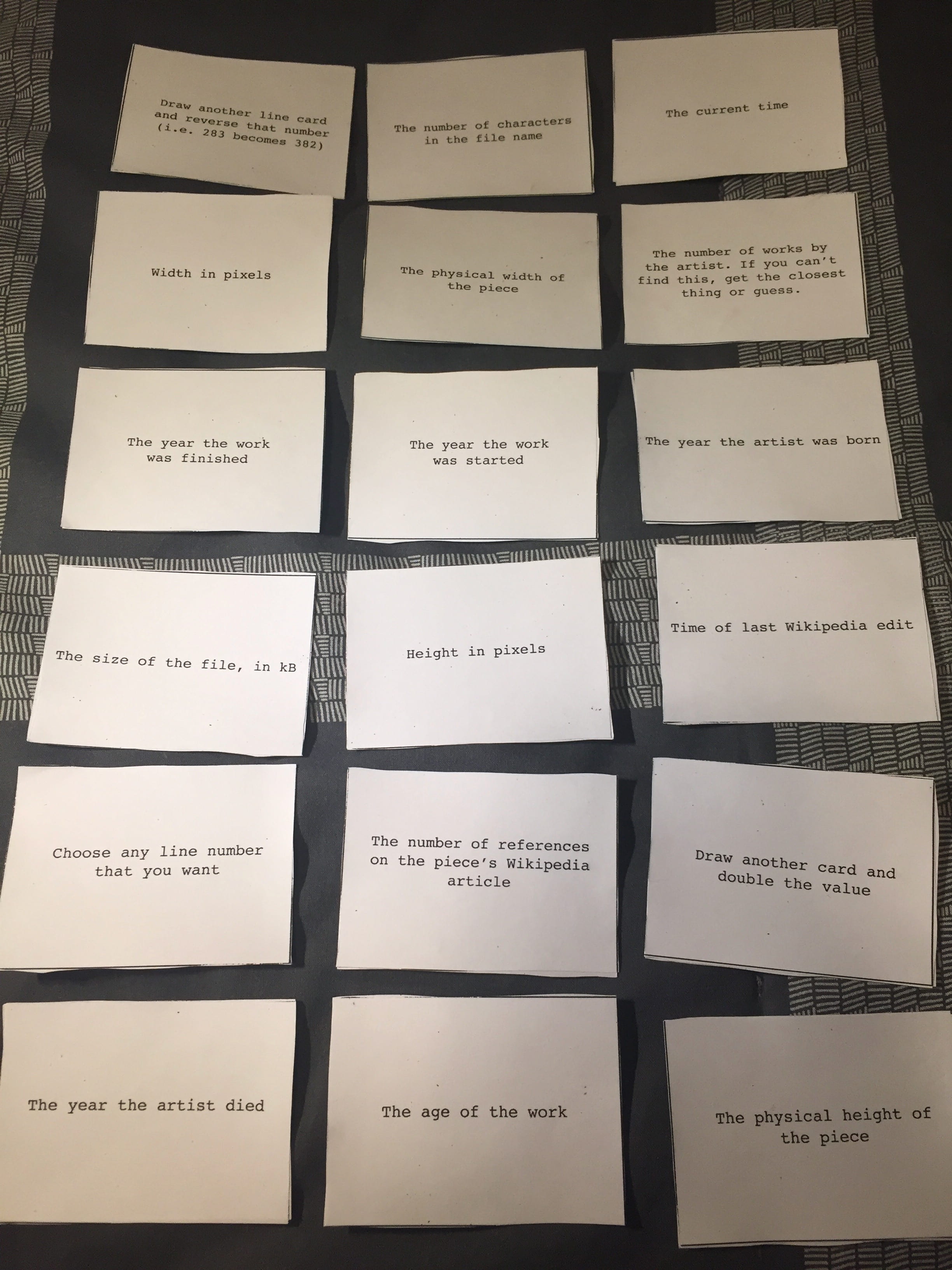
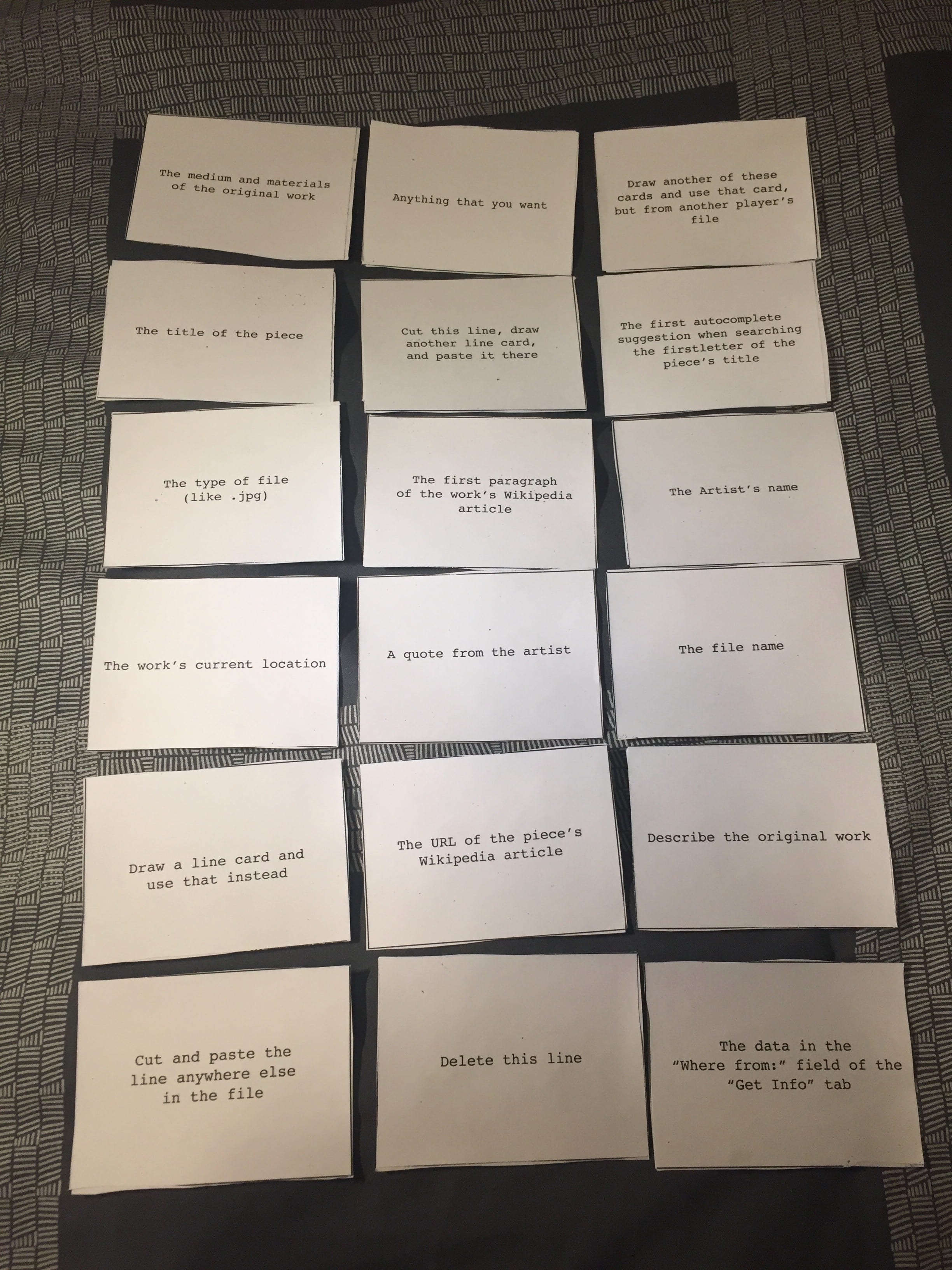
Players take turns drawing cards and editing files for a predetermined number of turns. Everyone then looks at the resulting files and votes on which is their favorite, and the player that receives the most votes wins. If a file becomes corrupted to the point that it will not open, that player cannot win.
Examples of Finished Games
Here are some examples of the images that were corrupted during play testing!

Original: The Little Fourteen-Year-Old Dancer by Edgar Degas
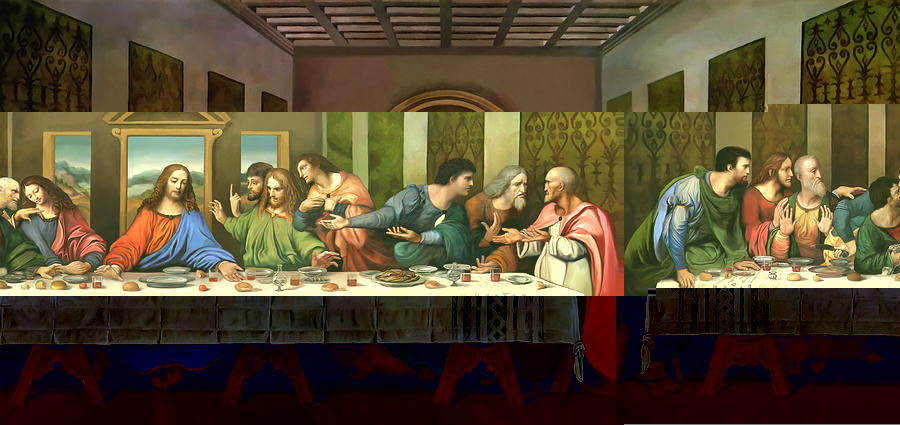
Original: The Last Supper by Leonardo da Vinci
Original: American Gothic by Grant Wood
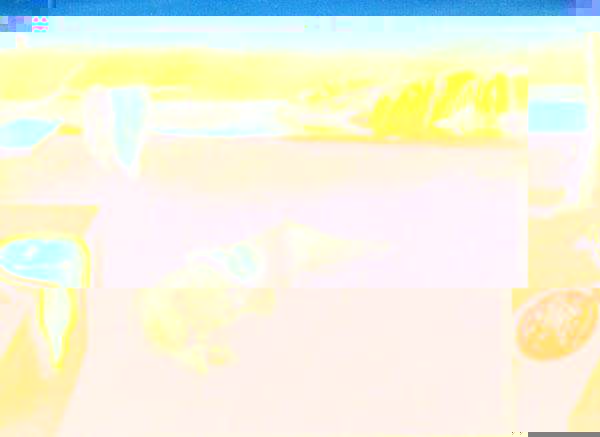
Original: The Persistence of Memory by Salvador Dalí
Artist’s Statement
In terms of inspirations, the game itself is pretty much a collage of ideas from different works and games. Earlier I noted that I was inspired by René Magritte’s La trahison des images (The Treachery of Images), and how it draws attention to the fact that it is simply a representation of a pipe, and not actually a pipe. Another inspiration was the Berlin strain of Dada’s use of collage and photomontage, particularly the works of Hannah Höch. My game encourages players to create a sort of “collage” out of metadata and display it in a visual way. While the result might not look like a collage, in a way it is. Digital images are just information, and combining information can create new information.
Playing off the idea of taking information and rearranging it into something different, I was also inspired by the works of Hannover Dadaist Kurt Schwitters. I was particularly inspired by his poem “An Anna Blume,“ and how he takes the familiar form of a love poem and twists it into something different and chaotic. My game takes familiar images and twists them into something different and unexpected as well.
The Original Prototype
Not much of the gameplay changed between the final and the prototype, though the aesthetics changed quite a bit and the flow of the game was polished up.
The initial prototype was played with hand written index cards. There were 17 cards of each type, as opposed to the final number of 18 for each in the final. The wording on several cards was reworked to be more clear, and a Line card about the estimated value of the work was removed entirely for both being difficult to find the fact that the resulting number was often far to large to work with.
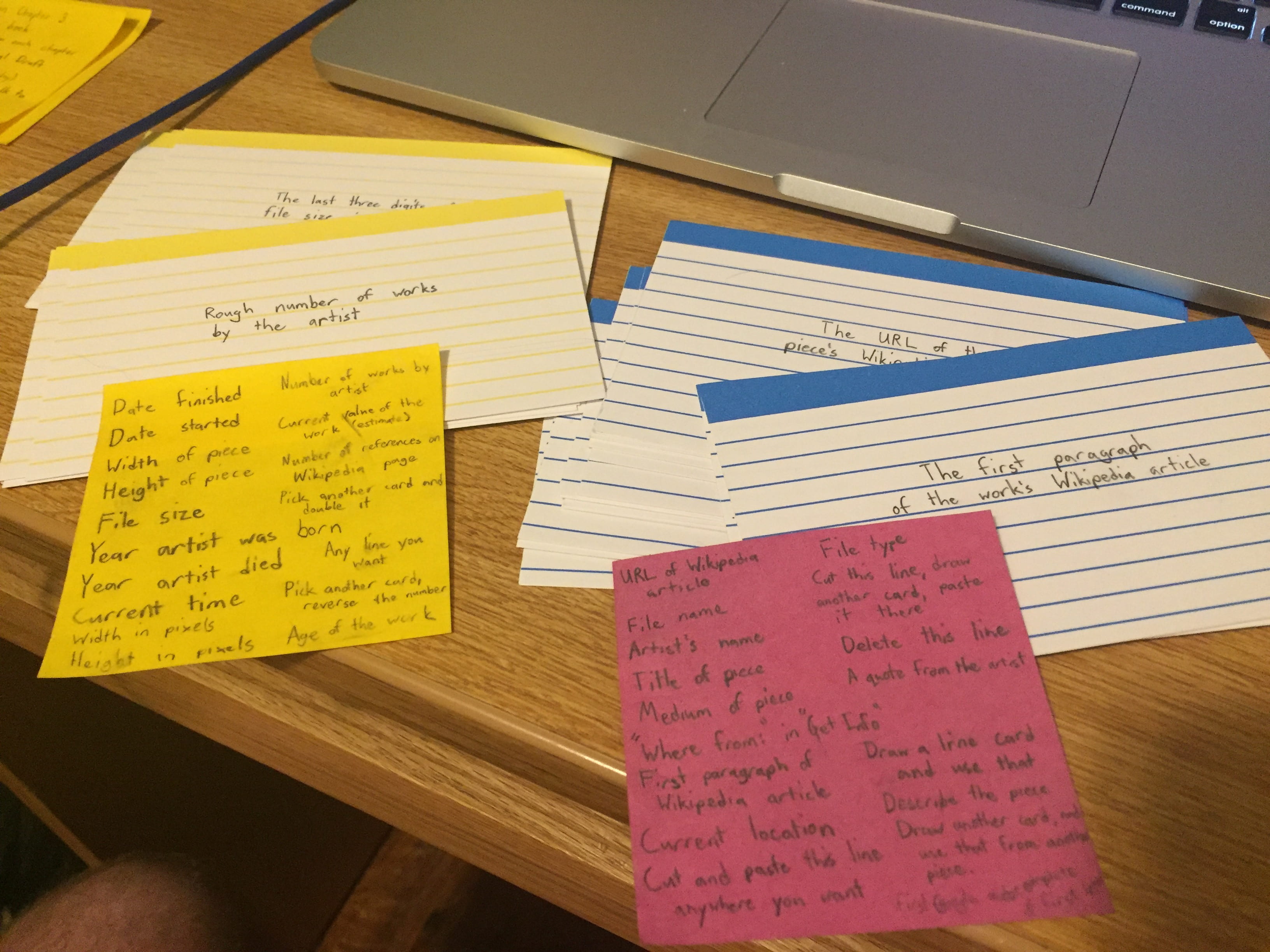
I was really worried that people would get bored waiting for their turns after the initial test of the prototype made it clear how long the turns took. I solved this with a couple of additions to the game for the final version: new card drawing mechanics, the Line Replacement Corruption app, and shortening the game.
In the prototype, both your Line and Data cards were drawn randomly. This didn’t feel very good, as you had no control and spent the time between your turns not engaging with the game. Giving the player a choice between face up cards lets the players who are waiting for a turn something to look at and plan with, as well as give the player taking their turn some control over the outcome of the game.
The other way I tried to make the game more fun for the players waiting to take a turn was to speed up the turns thought the Line Replacement Corruption app. As stated earlier, it partially automates the corruption process (depending on the cards drawn) to make turns faster. This seemed to work well, as many turns were shorter as a result of adding it.
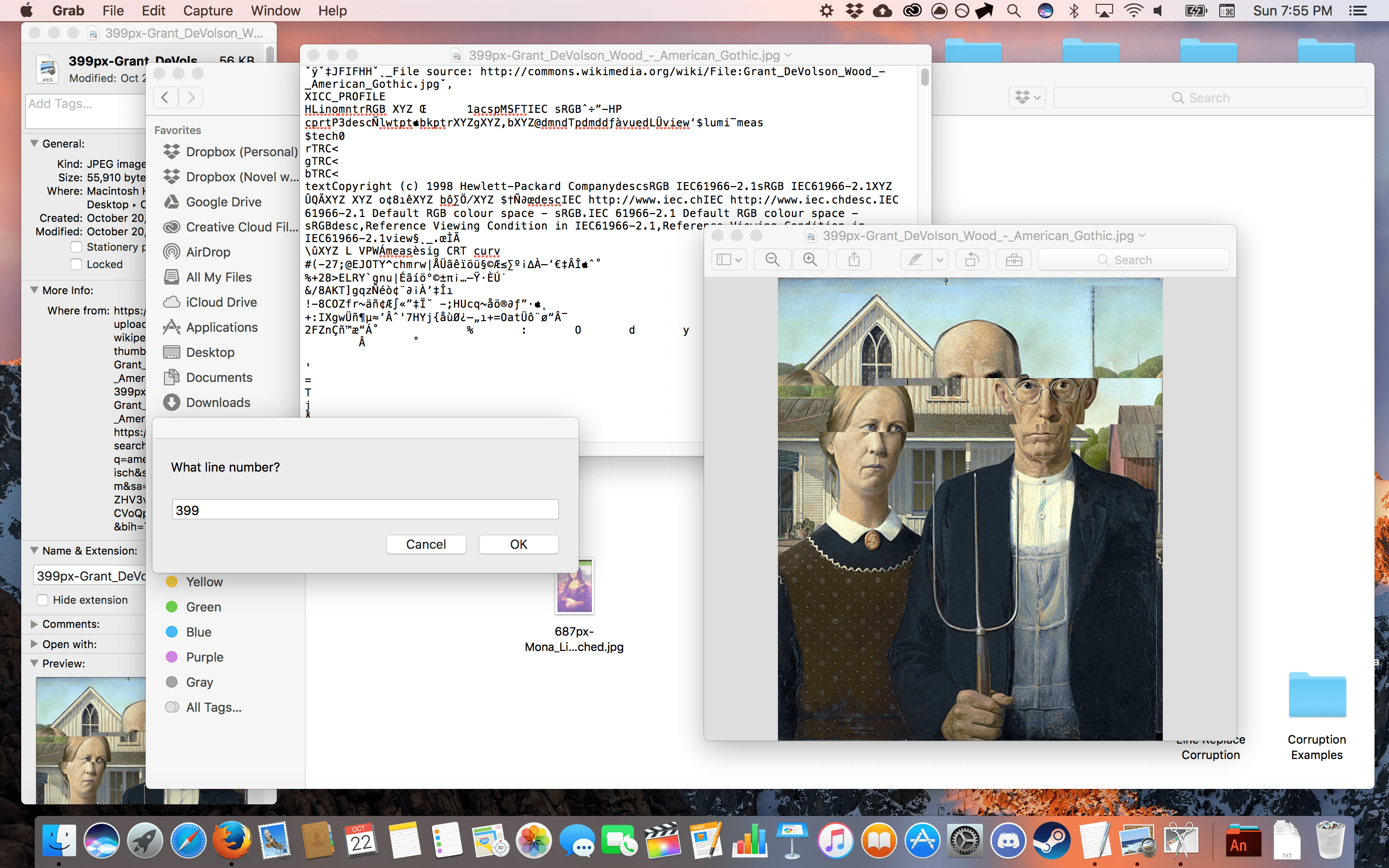
I also addressed the issue by switching from using all of the cards in the game to deciding on a number of turns that each player can take.
During the testing of the final version I noticed that people enjoyed watching other players take their turns. It seems to be due to the semi-random nature of the corruption; people want to know what’s going to happen to the picture.
Below is a download for the Corruption Game folder that includes the Line Replacement Corruption app, all of the visual assets used in the game, and several examples of finished corruptions. It was designed for and will probably only work on a Mac.
https://www.dropbox.com/s/97e79rx2iw33tae/Corruption%20Game.zip?dl=0
